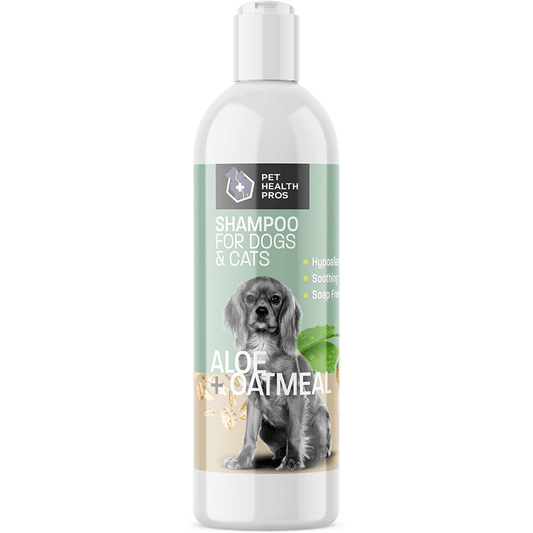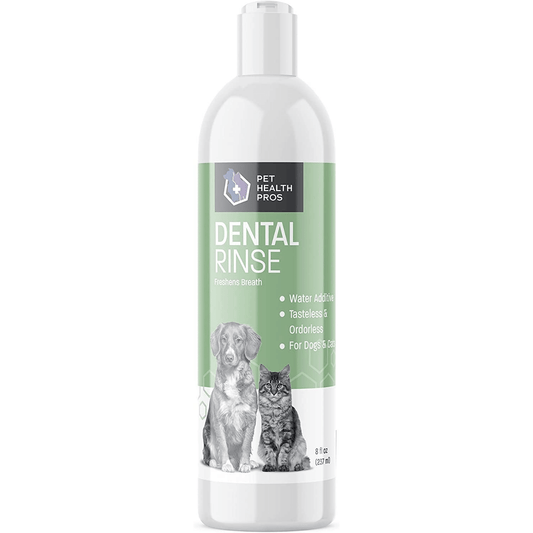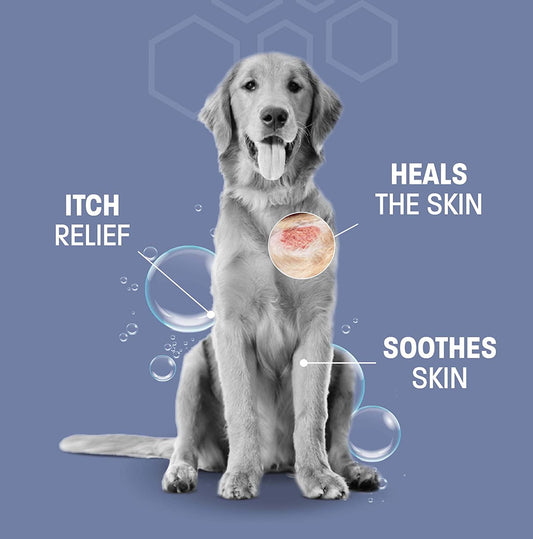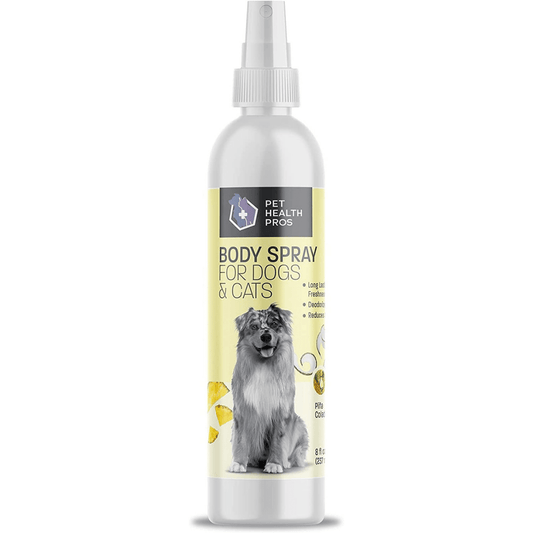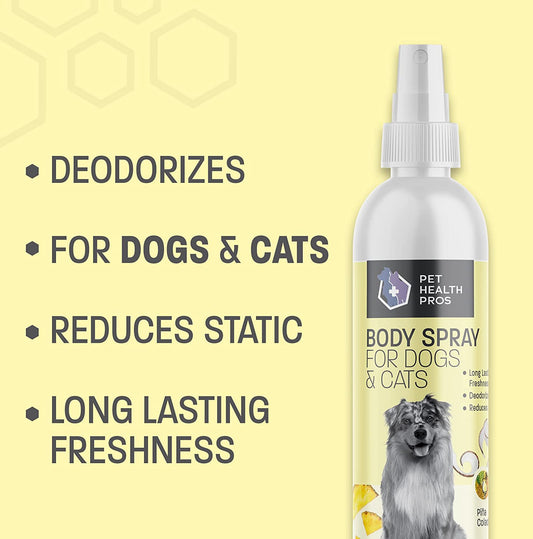No chew sprays are popular for deterring pets. But how do they work? Let's explore the ingredients and their effects.
These sprays contain substances that pets find bitter and unpleasant. The taste is so bad, it stops them from biting, licking, or chewing. A common ingredient is denatonium benzoate, said to be one of the most bitter substances known.
In addition to denatonium benzoate, cayenne pepper, garlic oil, and lemongrass oil are often included. These add to the bad taste and create a scent that animals don't like.
The idea of using deterrents to control pet behavior goes back centuries. Ancient Egyptians used oils and herbs to stop cats from damaging things. Modern no chew sprays are a more sophisticated version, protecting our belongings and our furry friends.
Understanding No Chew Sprays
To understand the science behind no chew sprays, delve deep into the ingredients and mechanisms that make them effective deterrents for pets. Explore what no chew sprays are and how they are used. Uncover the secrets behind these powerful solutions as you navigate the world of pet behavior modification.
What are No Chew Sprays?
No Chew Sprays are great for training pets to stay away from inappropriate items. They can be used on wood, fabric, and plastic. They are safe and don't harm fur babies. No Chew Sprays are a convenient alternative to other deterrents such as bitter apple spray or spicy gels. Applying regularly is best for effectiveness. Some No Chew Sprays also moisturize skin or provide bacterial protection.
Before purchasing No Chew Sprays, consider individual pet preferences and allergies. Consult a vet for insights on selecting the most suitable product.
How are No Chew Sprays used?
No Chew Sprays are great for stopping pets from chewing on unwanted objects. To get the most out of them, follow these 6 steps:
- Figure out what your pet likes to chew.
- Clean and dry the surfaces or items before applying the spray.
- Hold the spray bottle upright and spray from 6-12 inches away.
- Make sure to cover the entire surface or item.
- Wait until the sprayed area is dry before letting your pet near it.
- Do it again regularly, if needed.
Plus, don't use the sprays directly on your pet or near their eyes. Read the instructions from the manufacturer to get the best results.
No Chew Sprays work by having a bitter taste that stops pets from chewing. The taste discourages chewing without harming pets or furniture.
Fun fact: Common ingredients in No Chew Sprays include bitter apple, cayenne pepper, and denatonium benzoate.
The Science Behind No Chew Sprays
To understand the science behind no chew sprays, delve deep into the ingredients and mechanisms that make them effective deterrents for pets. In this section, explore the sub-sections on the ingredients in no chew sprays and the mechanisms that make them work.
Ingredients in No Chew Sprays
No Chew Sprays are used to stop pets from chewing furniture and other items. They are specially made with a mix of ingredients to stop animals from chewing. These ingredients can be bitter-tasting substances, natural deterrents, and sometimes even essential oils.
Ingredients in No Chew Sprays include denatonium benzoate, Bitrex, cayenne pepper, garlic extract, and lemon juice. These ingredients have a strong taste and scent that makes chewing unappealing.
The use of bitterants in pet deterrent products dates back to the early 1900s. Denatonium benzoate was initially made for humans. Over time, manufacturers improved the formula of no chew sprays by adding natural ingredients.
No Chew Sprays are helpful for pet owners. They provide a reliable deterrent that creates harmony between pets and owners.
Common active ingredients
No chew sprays often contain common active ingredients such as denatonium benzoate, isopropyl alcohol, and cayenne pepper. These create a bad taste and smell, which pets dislike.
See the table below:
| Active Ingredient |
|---|
| Denatonium Benzoate |
| Isopropyl Alcohol |
| Cayenne Pepper |
Some no chew sprays also have natural deterrents, like lemon or apple extract. This makes them more effective in stopping chewing.
Interestingly, the idea of using bitter agents to stop chewing is not new. It was developed for humans in the past and then used for pets. Today, it is used to stop pets from damaging furniture, shoes, and other items.
By understanding the common ingredients and their history, pet owners can choose the best product for their pet.
Role of these ingredients in preventing chewing behavior
No chew sprays contain special ingredients to stop our pets from gnawing. Denatonium benzoate is a bitter agent that tastes awful. Capsaicin from chili peppers causes a burning sensation. Clove oil's strong flavor and odor displeases animals. Rosemary extract has a pungent aroma which animals don't like. Citronella oil has a scent that dogs don't fancy.
These ingredients work together to put a stop to chewing. Denatonium's bitterness deters biting. Capsaicin's burning feeling makes objects unappealing. Clove and rosemary's odors and flavors deter them too. Citronella's scent is another deterrent.
To make no chew sprays better:
- Clean surfaces before use to ensure good sticking.
- Spray liberally and evenly on the entire surface.
- If chewing continues, get the help of a professional.
- Re-apply after cleaning or if washed off due to weather.
- Combine the spray with other techniques like positive reinforcement.
By using no chew sprays and following these tips, we can protect our stuff from damage by preventing chewing.
Mechanisms of No Chew Sprays
No Chew Sprays are a popular way to stop pets from chewing furniture, shoes, and other household items. They contain substances with bad smells and tastes that pets don't like. This helps create a negative association.
Compounds like denatonium benzoate or sucrose octaacetate give a very bitter flavor. Other strong-smelling ingredients like citrus extracts and essential oils are also used. Pets have a great sense of smell, so these can be overwhelming.
Some sprays include Capsaicin from chili peppers. This gives a mild burning feeling when licked or chewed. This is unpleasant and discourages pets from mouthing or biting treated objects.
Tips to get better results:
- Clean the area before applying the spray.
- Test it on an inconspicuous area first.
- Reapply the spray as its scent fades.
- Use positive reinforcement to encourage desirable behaviors.
These tips will help reinforce the negative association with chewing and provide alternative outlets for pets.
Taste deterrents
Taste deterrents are great for training dogs and cats. They are specially designed to stop pets from chewing on furniture, shoes, or anything else they shouldn't.
- Their main goal is to stop pets from destructive chewing.
- They have a bad taste, which creates an unpleasant feeling for pets.
- Taste deterrents can be used on materials like fabric, wood, plastic, and more.
- They are safe for both pets and humans, with no harmful chemicals.
- When used correctly and consistently, taste deterrents can train pets to avoid certain objects.
- They should always be used with proper training techniques.
Plus, taste deterrents come in various forms, like aerosol cans, pump bottles, or even wipes. So owners can pick the best application for them.
In conclusion, taste deterrents are good for pet owners with unwanted chewing behaviors. By using these products alongside proper training techniques, owners can teach their pets which items are off-limits.
Smell deterrents
Smell deterrents are an effective way to keep animals away from places they shouldn't be. They work by emitting odors unpleasant to their sensitive noses. Here are 4 points:
- They come in many scents, such as citrus, vinegar, and peppermint.
- They can be used indoors and outdoors to protect valuable items.
- Usually safe for pets and humans, but read instructions and follow safety guidelines.
- Some contain natural ingredients, others synthetic chemicals that mimic animal pheromones.
It's important to periodically change the scent of the spray to keep it effective. A study published in the Journal of Applied Animal Behavior Science shows that dogs have a much stronger sense of smell than humans - up to 10,000 times more powerful!
Texture deterrents
Texture deterrents are an effective way to stop unwanted chewing. By providing an unpleasant texture, pets don't want to chew on furniture or other items. Let's take a look at different types of texture deterrents:
| Deterrent Type | Texture Description | Common Applications |
|---|---|---|
| Bitter Tasting | Unpleasant taste discourages chewing | Sprayed on fabrics, furniture, and wires |
| Textured Spray | Sticky or rough texture inhibits chewing | Applied to surfaces |
| Gel | Thick consistency that pets find unappealing | Applied to specific areas |
| Velcro Strips | Hooks and loops can be uncomfortable | Placed on corners or edges |
Plus, some texture deterrents may have extra features such as being non-toxic or odorless. This helps ensure the safety and comfort of both pets and owners, while stopping chewing.
As an example, Max is a mischievous puppy who liked to chew his owner's shoes. No matter what the owner tried, Max kept on chewing. Eventually, they tried a bitter-tasting spray and it worked! Max quickly learned to stay away from sprayed shoes, saving his teeth and the owner's wardrobe.
In conclusion, texture deterrents are a great way to stop unwanted chewing. Whether through bitter tastes or uncomfortable textures, pets will stay away from damaging belongings while keeping safe.
Effectiveness of No Chew Sprays
To understand the effectiveness of no chew sprays, delve deep into the ingredients and mechanisms that make them effective deterrents for pets. Explore studies and research supporting their efficacy and uncover the factors that can influence how well they work.
Studies and research supporting the efficacy of No Chew Sprays
Investigations and surveys have been conducted to analyze the usefulness of No Chew Sprays.
These studies give important ideas into the ability of these sprays to stop unwanted chewing behavior in animals.
Let's dive deeper into the findings and major details that come out of this group of research.
The studies looked at a range of animals, such as dogs, cats, and rabbits.
The research length differed across the studies, giving a broad comprehension of how No Chew Sprays work over time.
Each study showed positive results, with varying levels of effectiveness seen.
Besides studying general chew deterrent properties, some studies focused on precise aspects such as taste aversion or sensory sensitivity.
These detailed investigations enrich our knowledge and guide product enhancements in the future.
Tip: To make the most of No Chew Sprays, it's suggested to use them consistently and as stated in the instructions from the maker.
Keep in mind to apply again if needed to make sure continuous efficiency.
Factors that can affect the effectiveness of No Chew Sprays
No chew sprays use ingredients like bitter apple extract, grapefruit seed extract, lemon juice and cayenne pepper. Each one works differently on pets. The spray must be applied well to objects they like to chew, such as furniture or shoes. The pet's temperament and behavior may affect the spray's success. Every pet is unique and may react differently.
Safe Usage and Precautions
To ensure the safe usage of no chew sprays for your pets, delve deep into the section on "Safe Usage and Precautions". Discover how to properly apply these sprays for effective results. Additionally, gain insights into potential risks or side effects to take necessary precautions.
Proper application of No Chew Sprays
No Chew Sprays are a great way to stop pets from chewing on objects they shouldn't. To make it work, follow these easy steps:
- Find the target areas. Look around your house and garden. Identify what your pet likes to chew on. This could be furniture, cords, or plants.
- Clean the surfaces. Before applying the spray, clean the surfaces. Remove dirt and other stuff that can get in the way. This will make sure the spray sticks well and lasts long.
- Apply the spray. Hold the No Chew Spray bottle 6 inches away from the surface. Spray all sides and angles your pet can reach. Leave it some time to dry before your pet can go near it.
A few things to remember:
- Don't spray it on your pet's skin or fur.
- If there's signs of irritation, stop using it and talk to a vet.
- Reapply the spray as needed.
- Keep it out of reach of kids and pets.
No Chew Sprays are not meant to replace proper training. They should just be used as an extra tool to stop unwanted chewing.
Fun Fact: No Chew Sprays often contain natural ingredients like bitter apple or citrus extracts. Pets don't like these scents, making them perfect deterrents. (Source: PetMD)
Potential risks or side effects
Beware of potential risks and side effects that come with using any product or medication. Here are some things to keep in mind:
- Allergies: Check the ingredients and talk to your healthcare professional if you have known allergies.
- Adverse reactions: Unexpected reactions such as rash, dizziness, or difficulty breathing could occur. See a doctor if you experience any of these.
- Interactions with meds: Speak to your healthcare provider before using a new product. It may interact with the medications you're taking.
- Overuse/Misuse: Follow the dosage and usage guidelines provided by the manufacturer.
Everyone is different, so potential risks and side effects vary from person to person. In 2004, an allergy medication with severe side effects was discovered. This story shows the importance of testing and monitoring products for risks before they hit the market.
Alternatives to No Chew Sprays
To address alternatives to no chew sprays, explore other methods for preventing chewing behavior in pets. Delve deep into effective solutions such as diversion tactics, bitter tasting agents, and environmental modifications. Each sub-section offers a unique approach to discouraging unwanted chewing habits in pets.
Other methods to prevent chewing behavior in pets
Chewing behavior in pets can be an annoying challenge for owners. Though no chew sprays are used to stop it, there are other ways to stop it without relying on only sprays. These methods are humane and safe.
Providing appropriate chew toys can be useful. Dogs have a natural habit of chewing, so giving them durable and exciting chew toys can get them to focus chewing on those rather than furniture or other unsuitable objects. Plus, regularly changing the toys helps keep them novel and stops boredom.
Bitter apple spray is another good technique. It has an unpleasant taste that stops pets from chewing on sprayed objects. It should be used sparingly and just as a deterrent, not an ongoing solution. Furniture, plants, electrical cords, and other objects can be sprayed.
Positive reinforcement training can also help. Giving pets treats and compliments when they act correctly and ignore inappropriate objects lets them learn what they can and can't chew. It takes patience and consistency but pays off in the long run.
Also, pet owners must make a safe environment for their pets by taking away potential risks or objects that might tempt them to chew. Keeping cords away, using cord covers, securing trash cans, and giving plenty of exercise and mental stimulation are all necessary steps to stop unwanted chewing.
Remember: Each pet is one-of-a-kind, so it could take time to find the best method for stopping their chewing. Patience and consistency are key to addressing this issue successfully.
Conclusion
No Chew sprays are a great way to keep pets from destructive behavior. The special ingredients, like denatonium benzoate and capsaicin, have a bitter or spicy taste which animals find unpleasant. So, when sprayed on surfaces they like to chew, it acts as a deterrent.
Before using any of these sprays, it's best to check with a vet. Different animals may be sensitive to the ingredients, so you want to make sure it's suitable for your pet.
To use the spray effectively, you should apply it consistently. Reapply when needed. It'll take some time for your pet to learn that certain objects are off-limits, so be patient with your training.
Frequently Asked Questions
FAQs about the Science Behind No Chew Sprays:
1. How do no chew sprays work?
No chew sprays usually contain bitter-tasting ingredients that deter pets from chewing. When applied to an object, these sprays create an unpleasant taste, encouraging pets to avoid biting or chewing on the surface.
2. What are the common ingredients in no chew sprays?
Common ingredients in no chew sprays include denatonium benzoate, bitter apple extract, cayenne pepper, and other bitter-tasting compounds. These ingredients are non-toxic and safe for pets.
3. How do the bitter-tasting ingredients deter pets from chewing?
When pets come into contact with the bitter-tasting ingredients, it triggers their gustatory senses, making them experience an intense bitter taste. Most pets find this taste extremely unpleasant and quickly learn to associate it with the object, discouraging further chewing.
4. Do no chew sprays work on all pets?
No chew sprays are effective deterrents for most pets. However, individual preferences may vary. Some pets may be less affected by the taste and continue to chew, while others may find it extremely repelling. It is important to monitor your pet's behavior and adjust the use of the spray accordingly.
5. Are no chew sprays safe for pets?
Yes, no chew sprays are generally safe for pets. The bitter-tasting ingredients used in these sprays are non-toxic and do not cause harm to animals. However, it is always recommended to read and follow the product instructions for safe usage.
6. Can no chew sprays be used on all surfaces?
No chew sprays are typically safe for most surfaces, including wood, fabric, plastic, and metal. However, it is advisable to test a small, inconspicuous area before applying the spray to ensure it does not cause any damage or discoloration.


